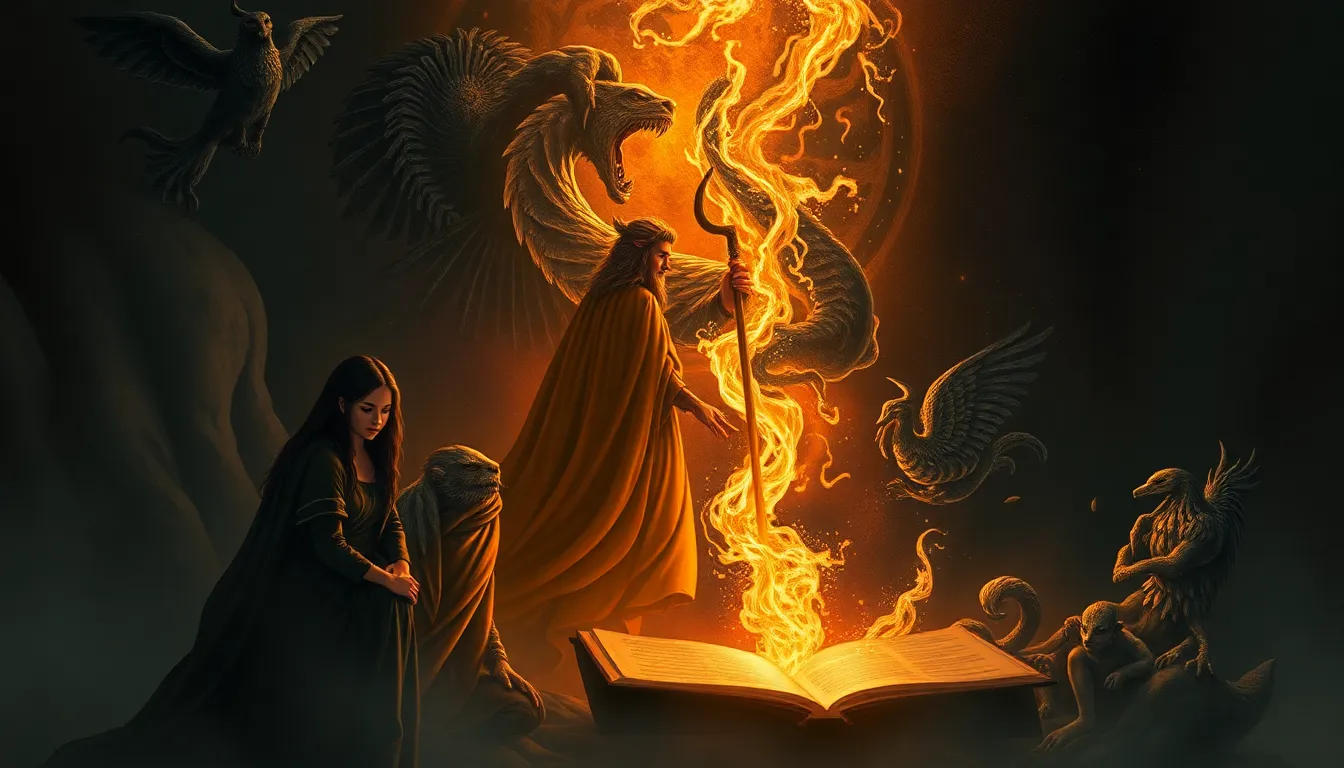Tanuki of Hokkaido: Exploring the Ainu Influence on Tanuki Folklore
I. Introduction
The tanuki, often translated as “raccoon dog,” is a significant figure in Japanese culture, known for its playful nature and shape-shifting capabilities. This creature has long been a part of Japanese mythology, embodying characteristics of a trickster and a bringer of good fortune.
Hokkaido, the northernmost island of Japan, is home to the Ainu people, an indigenous group with a rich cultural heritage. The Ainu have their own unique beliefs and stories that intertwine with the folklore of the tanuki, providing a fascinating lens through which to explore this iconic creature.
This article aims to delve into the interplay between Ainu culture and tanuki folklore, uncovering the ways in which these narratives reflect broader themes of identity, spirituality, and the relationship between humans and nature.
II. The Tanuki: A Cultural Icon
In Japanese mythology, the tanuki is celebrated as a cultural icon, often depicted in art, literature, and popular media. Its playful demeanor and magical abilities have made it a beloved figure across generations.
A. Description of the Tanuki in Japanese Mythology
Tanuki are typically portrayed as shape-shifters with the ability to transform into various forms, including humans, objects, and other animals. They are often associated with the harvest, prosperity, and joy, symbolizing abundance and good fortune.
B. Characteristics and Abilities Attributed to Tanuki
Some of the notable characteristics and abilities of tanuki include:
- Shape-shifting: The ability to change shape at will.
- Trickster nature: Often playing pranks on humans, leading to humorous situations.
- Supernatural powers: Capable of performing magic, such as creating illusions or transforming landscapes.
C. Tanuki in Contemporary Culture: Mascots and Media
In contemporary Japan, tanuki continue to thrive as cultural icons. They are frequently used as mascots for various products and events, and appear in a myriad of media forms, including anime, manga, and video games. Their image has evolved but remains rooted in the traditional characteristics that make them endearing to the public.
III. The Ainu People: An Overview
The Ainu people have a rich history and cultural identity that predates the arrival of the Japanese on Hokkaido. Their unique traditions and beliefs have significantly influenced the folklore of the region, including the narratives surrounding the tanuki.
A. Brief History and Origins of the Ainu
The Ainu are believed to be the indigenous inhabitants of Hokkaido, with origins that can be traced back thousands of years. Historically, their way of life was closely tied to the natural environment, relying on fishing, hunting, and foraging.
B. Cultural Practices and Beliefs of the Ainu
Ainu culture is characterized by a deep reverence for nature and spirituality. They practice rituals and ceremonies that honor the spirits of animals, plants, and natural phenomena. The Ainu language, art, and oral traditions reflect their unique worldview.
C. The Ainu Worldview: Nature, Spirituality, and Animal Relationships
Central to Ainu beliefs is the concept of animism, where all living beings and natural elements possess spirits. This worldview fosters a sense of respect and harmony with nature, influencing their stories and interactions with animals, including the tanuki.
IV. Ainu Folklore and the Tanuki
The tanuki holds a notable place in Ainu folklore, often appearing in myths and stories that reflect the Ainu’s values and beliefs.
A. Role of the Tanuki in Ainu Myths and Stories
In Ainu narratives, tanuki are depicted as clever and resourceful beings. They often assist humans in various tasks or play tricks that reveal deeper moral lessons.
B. Comparison of Ainu Tanuki Tales with Broader Japanese Folklore
While tanuki stories exist throughout Japan, Ainu tales emphasize the creature’s relationship with nature and its role in the Ainu belief system. This contrasts with other Japanese folklore, where tanuki may be portrayed more as mischievous tricksters without the same spiritual significance.
C. Symbolism of the Tanuki in Ainu Culture
In Ainu culture, the tanuki symbolizes adaptability, resilience, and a connection to the spirit world. Its ability to shape-shift is seen as a metaphor for the fluidity of life and the importance of respecting the natural world.
V. The Influence of Ainu Beliefs on Tanuki Folklore
The Ainu’s shamanistic traditions and beliefs have significantly influenced the narratives surrounding the tanuki, enriching its folklore.
A. Shamanistic Elements in Ainu Tanuki Narratives
Ainu stories often incorporate shamanistic elements, where tanuki may act as intermediaries between humans and the spirit world. This reflects the Ainu’s belief in the interconnectedness of all beings.
B. Transformation and Shape-Shifting: Ainu Beliefs Reflected in Tanuki Stories
The theme of transformation is prevalent in Ainu tanuki tales, paralleling the Ainu belief in the fluidity of identity and existence. This theme serves to highlight the importance of adaptability in both the natural world and human life.
C. The Tanuki’s Role as a Trickster and Its Implications in Ainu Society
The trickster aspect of the tanuki can be seen as a reflection of the Ainu’s values, where humor and wit are celebrated as essential traits. This role also serves to communicate important lessons about humility, respect for nature, and the consequences of greed.
VI. Preservation of Ainu Culture and Tanuki Folklore
As modernization continues to impact the Ainu way of life, efforts are underway to preserve their cultural traditions and the folklore surrounding the tanuki.
A. Current Efforts to Preserve Ainu Traditions and Stories
Various organizations and initiatives are dedicated to preserving Ainu culture, language, and folklore. These efforts include:
- Documenting oral histories and traditional stories.
- Promoting Ainu art and handicrafts.
- Hosting cultural events and educational programs.
B. The Impact of Modernization on Tanuki Folklore
Modernization poses challenges to the transmission of tanuki folklore and Ainu traditions. Urbanization and changing lifestyles can dilute the cultural narratives that have been passed down through generations.
C. Revitalization Movements and the Role of Education
Revitalization movements aim to engage younger generations in Ainu culture and folklore. Educational programs that incorporate traditional stories and values are vital for sustaining the cultural legacy of the Ainu and the tanuki.
VII. Tanuki in Modern Hokkaido: Cultural Significance Today
Today, the tanuki remains a powerful symbol of Hokkaido’s identity, representing both traditional beliefs and contemporary culture.
A. Tanuki as a Symbol of Hokkaido’s Identity
The tanuki is often associated with Hokkaido’s natural beauty and rich cultural heritage. It serves as a reminder of the region’s indigenous roots and the importance of preserving its unique identity.
B. Contemporary Artistic Representations of Tanuki
Artists in Hokkaido continue to draw inspiration from the tanuki, creating works that reflect its folklore and cultural significance. From sculptures to paintings, the tanuki is celebrated as an enduring symbol of creativity and tradition.
C. Tourism and the Economic Role of Tanuki Folklore in Hokkaido
Tourism in Hokkaido benefits from the tanuki’s cultural significance, with various attractions and events centered around this mythical



